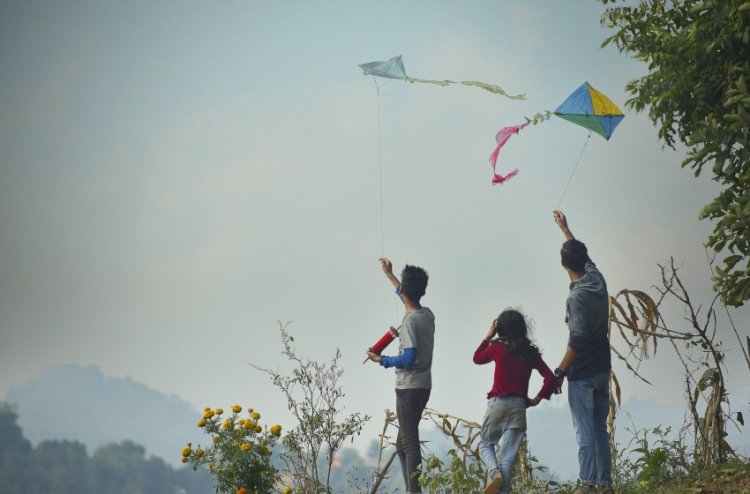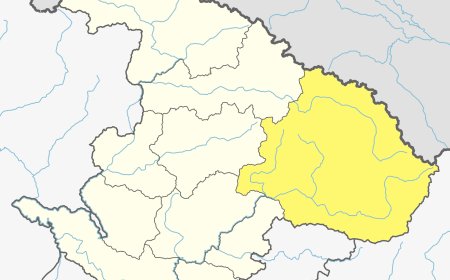Kite Traditions in Nepal: Stories, Myths, and the Joy of Dashain
Explore the enchanting world of kite traditions in Nepal during the joyous Dashain festival. Uncover the stories, myths, and cultural significance of kite flying that brings people together under the vast, open Nepali sky.

Introduction
Nepal, nestled in the embrace of the mighty Himalayas, is a land of diverse cultures and rich traditions. Amidst the multitude of customs that define this beautiful nation, one stands out in its vividness and charm - the tradition of kite flying. This article embarks on a journey to unravel the enchanting history and cultural significance of kite flying during Nepal's most celebrated festival, Dashain. Let's explore the fascinating stories, myths, and the boundless joy that fills the Nepali skies with colorful kites.
Dashain: A Festival of Colors and Togetherness
Dashain, known as Vijaya Dashami, is Nepal's most significant and widely celebrated festival. It typically falls in September or October, marking the end of the monsoon season and the arrival of autumn. As Dashain approaches, a sense of excitement permeates the air, and people from all walks of life look forward to the festivities. Among the many customs and rituals of Dashain, the art of flying kites holds a unique and cherished place.
A Dashain Delight: The Age-Old Tradition
Kite flying has been an integral part of Dashain celebrations for generations. As the monsoon retreats and the skies clear, the people of Nepal prepare for this festive season. While the festival is marked by various rituals and customs, the sight of kites soaring high above is a spectacle that captures the essence of Dashain. But how did this tradition begin?
Story 1: A Connection with Ancestors
One popular belief is that flying kites during Dashain is a way of connecting with one's ancestors. When the kites ascend into the sky, they serve as a medium to let the ancestors know that their descendants are doing well and remembering them. This sense of connection to the past lends a deeply spiritual dimension to the act of kite flying.
Story 2: The Treaty with the Birds
Another intriguing myth tells the story of how this tradition came to be. It is said that in the past, the people of the Kathmandu Valley used to fly kites in their free time. However, this brought trouble to the local bird population, with many birds being injured or killed by the kite strings. In response, the birds called for a meeting with the king, leading to an agreement that kites would only be flown once a year during Dashain. This enchanting myth portrays the harmony between humans and nature and highlights the importance of striking a balance.
Story 3: A Message to the Rain God
The Dashain festival coincides with the end of the farming season in Nepal. The tradition of flying kites during this time is believed to send a message to the god of rain, Indra, to cease the heavy rains, which can be detrimental to the harvest season. This story reflects the practical aspect of kite flying, where tradition is intrinsically linked with the livelihood of the people.
Story 4: Guiding Souls to Heaven
Kites are not just objects of joy; they are also believed to be guides for the souls of the recently departed. Both animals and humans that have left the earthly realm are guided to heaven through the ascent of kites in the sky. This story emphasizes the spiritual significance of kite flying during Dashain, transcending the boundaries between the physical and spiritual worlds.
Story 5: Messages of Joy and Wishes
Kites serve as colorful messengers of joy and well-wishes. During Dashain, people exchange good wishes with their neighbors and friends through these vibrant paper flights, spreading the happiness of the season. This story underscores the role of kites in fostering social bonds and sharing the spirit of the festival.
The Art and Craft of Kite Making
Kite making in Nepal is a skill that blends traditional craftsmanship with a deep understanding of materials and aerodynamics. Let's delve into the intricacies of creating these remarkable kites.
Materials Used: Lokta Paper and More
The heart of every Nepali kite, known as "Changa," is Lokta paper. Handmade and indigenous to Nepal, Lokta paper is renowned for its durability, resistance to humidity, insects, and tearing. The choice of Lokta paper is not arbitrary; it ensures that the kites can withstand the rigors of high-altitude kite flying. The strings used for flying, known as "Catch," are not your ordinary strings. These strings are prepared with precision and care, serving as the lifeline that connects the kite to its master.
Lattyain: The Nepali Spool
In Nepal, flying kites involves a unique tool known as "Lattyain." These spools are distinct with round, smooth sticks on either side, and they carry up to 6,000 meters of string. However, what sets them apart is the coating of ground glass powder that makes the strings formidable in battle. Ground glass-coated strings are vital in the competitive sport of kite fighting, where the objective is to cut the strings of rival kites. This skillful maneuvering in the sky brings a sense of thrill and competition to Dashain.
The Joy of Kite Fighting
For Nepali kite enthusiasts, the thrill comes from bringing down the kites of others. Ground glass-coated strings help in this endeavor. This friendly but competitive sport is a source of immense joy, especially among children. The tradition of kite fighting goes beyond just entertainment; it instills a sense of sportsmanship, strategy, and camaraderie among the participants.
Festivities and Kite Flying: Why It Matters
Beyond the myths and stories, kite flying during Dashain holds deep significance for Nepal's cultural landscape. Let's explore why it matters.
Carrying the Tradition Forward
Flying kites is not just a game; it's a tradition that dates back centuries. Passing down this historic pastime to younger generations is essential to keep it alive. When children learn to fly kites from their elders, they are not just engaging in play; they are becoming carriers of a cultural legacy that has been nurtured for generations.
Socializing and Bonding
In a world often dominated by work and deadlines, kite flying provides an opportunity for people to bond and socialize. The Dashain vacation, marked by kite flying, offers a chance to relax and connect with loved ones. Families and friends gather on rooftops and open fields, forming deep connections as they launch their kites into the sky. Kite flying transcends age, and it's not just the children who find joy in this tradition; adults too eagerly participate, rekindling the joy of their youth.
Communion with Nature
Kite flying takes people outdoors, allowing them to immerse themselves in the beauty of nature. The clear, serene skies during the fall are the perfect backdrop for celebrating the holidays. The act of looking up at the boundless sky and guiding a kite through the currents is not just a game; it's an intimate interaction with the environment. This connection with nature brings a sense of peace, joy, and wonder.
Sports and Competitiveness
Kite flying is not just child's play. It has become a competitive sport, with various kite flying competitions held during the Dashain season. These contests encourage participation and excitement while reveling in the festivities. Kite enthusiasts from all walks of life gather to showcase their skills and compete with one another. The sport of kite fighting, with its intricacies and strategies, adds a layer of excitement and friendly rivalry to the celebrations.
Conclusion
The tradition of kite flying during Dashain in Nepal is a testament to the country's rich heritage and the enduring joy it brings to the people. As the kites soar higher and higher, carrying with them messages of joy, remembrance, and hope, they paint the Nepali skies with the colors of tradition, unity, and celebration. Dashain is indeed a time to look up to the sky and let your spirit soar, just like the kites that fill Nepal's heart with joy during this festive season. So, when the next Dashain arrives, find a rooftop or an open field, grab your Changa, and join the symphony of kites dancing in the crisp autumn air. It's not just about flying kites; it's about celebrating a heritage that has stood the test of time and continues to bring communities together under the vast, open sky. In Nepal, Dashain is a celebration of life, culture, and the simple yet profound joy of flying a kite.
What's Your Reaction?





































































































